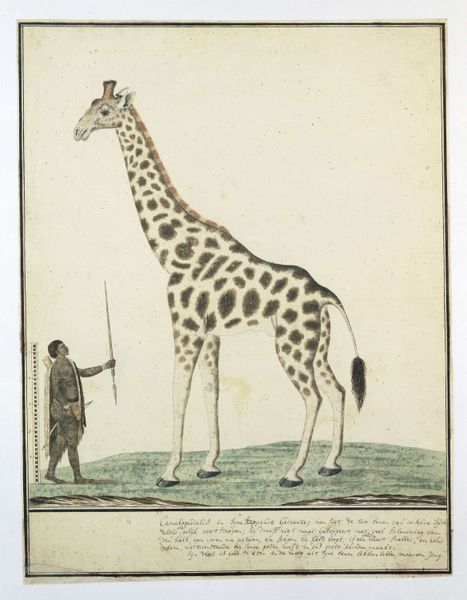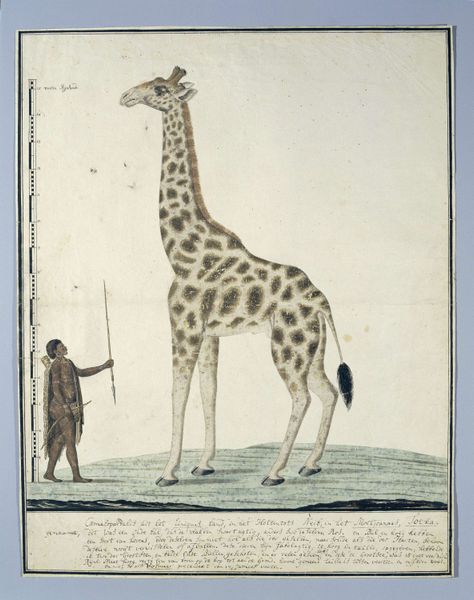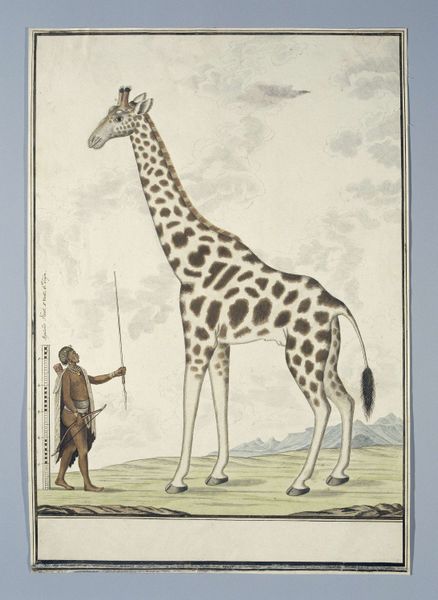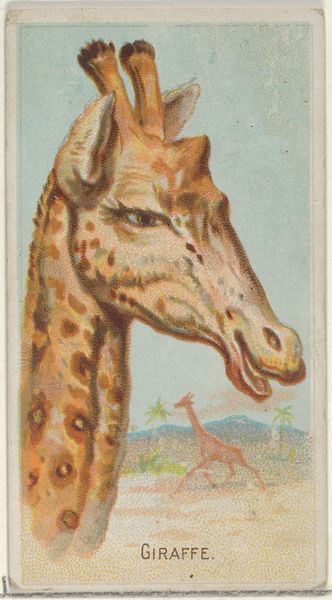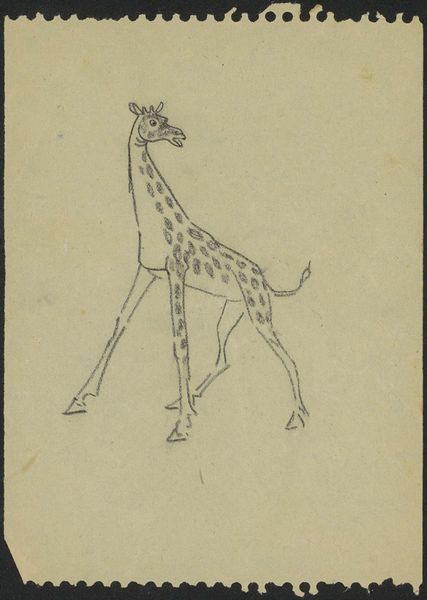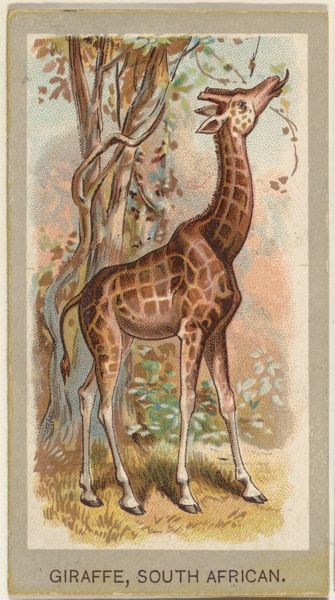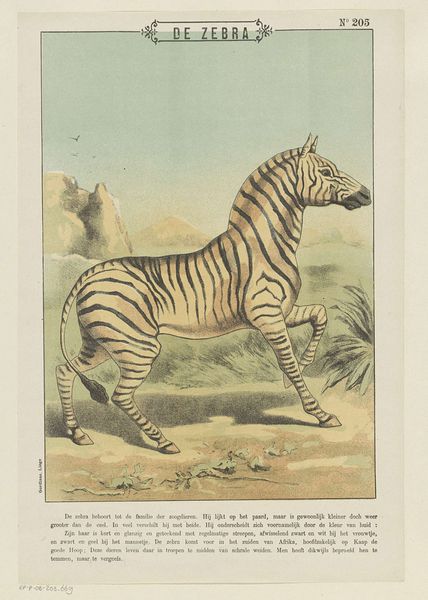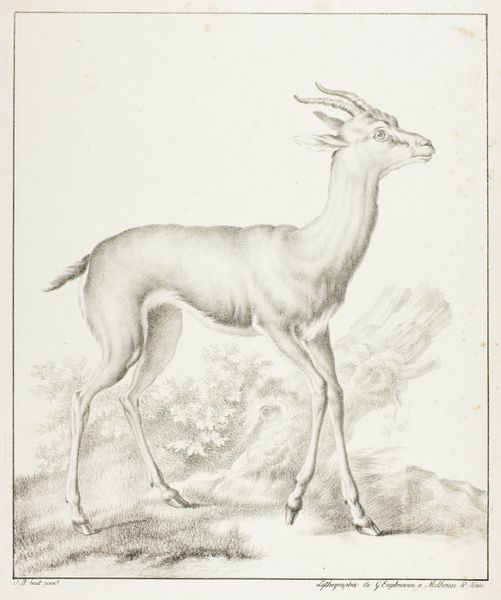
Donkere man met een tulband en een pofbroek een giraf aan een touw vasthoudend 1836 - 1912
0:00
0:00
drawing, engraving
#
portrait
#
drawing
#
animal
#
pencil sketch
#
landscape
#
engraving
#
realism
Dimensions: height 232 mm, width 177 mm
Copyright: Rijks Museum: Open Domain
Editor: This is "Dark man with a turban and puffy pants holding a giraffe on a leash", dating between 1836 and 1912 by Isaac Weissenbruch. It’s a detailed drawing. What strikes me is the sheer height of the giraffe compared to the man – the difference feels symbolic. How do you interpret this work? Curator: Indeed. Let’s consider the giraffe itself. Throughout history, its presence has often signified exoticism, otherness, the allure and exploitation of distant lands. Do you notice how the man, though leading the giraffe, seems almost dwarfed by its presence, his posture seemingly passive? Editor: I do. It's almost as though he's part of the landscape himself. Curator: Precisely. The giraffe, as an exotic import, speaks to a specific era – perhaps one of colonial ambition. But also think about the symbolism inherent in the act of depicting such a scene. Are we, as viewers, also implicated in the spectacle, in the act of observing and "possessing" the exotic? Editor: So, the drawing might be a reflection not just on the relationship between the man and the animal, but also on our own position as viewers, and the power dynamics inherent in that? Curator: Absolutely. The image, carefully rendered, invites us to question what it means to look, to own, to control. What continuities, or ruptures do you see with images from other eras that deal with animals? Editor: That's a really powerful idea. It makes you think about how representations of other cultures and beings always carry an inherent power dynamic. I never thought I’d see all that just by looking at a giraffe. Curator: These symbols persist. We continue to project our desires and anxieties onto the ‘other,’ making critical evaluation key.
Comments
No comments
Be the first to comment and join the conversation on the ultimate creative platform.

